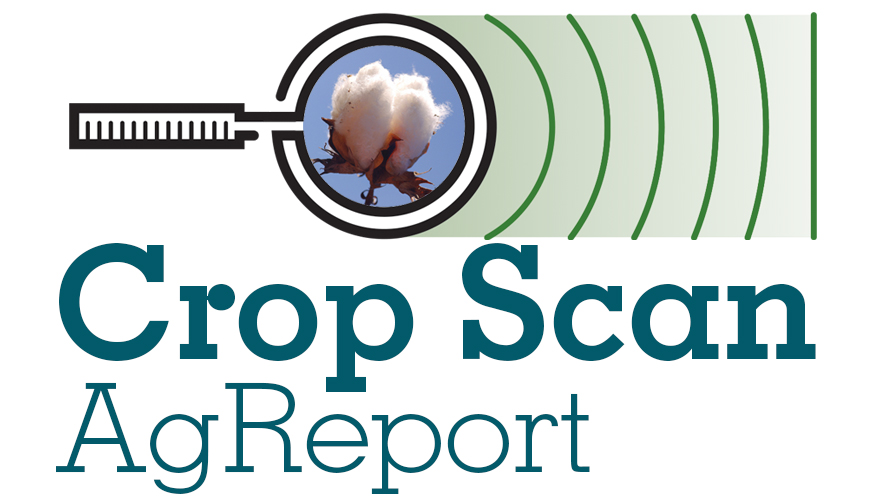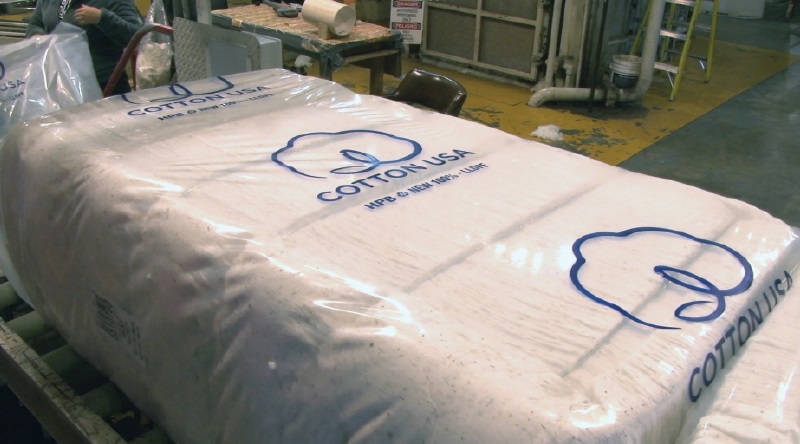Will Premiums Drive Up Pima Acreage?
With a premium price approaching $1.50 per pound, could there be a rebound in Pima production in the West for 2009?
It’s a situation that sounds similar to potential planting intentions for many growers Beltwide who have been tempted by higher priced corn or soybeans.
“There are just a lot of alternative crops that may produce better profit potential than premium cotton,” says Jesse Curlee, president of Supima, the promotional backbone of Pima cotton headquartered in Phoenix.
The number of Pima acres will depend on Upland cotton prices as well as grain, hay and vegetable markets, adds Paul Bush, who heads the Glendale, AZ, office for Calcot, Ltd., the large western cotton cooperative. “We hope for more Pima cotton,” he says.
So does Dwayne Alford, general manager of Yuco Gin, Inc., of Yuma, AZ — an operation that handled just under 1,000 acres of the premier fiber in 2008.
Overall, only about 203,000 acres of Pima were planted in 2008, barely 2% of the 9.3 million cotton acres planted nationwide. That was down from about 290,000 in 2007. Only about 170,000 Pima acres were expected to be harvested. Most of the acres were in California, but Arizona looks to grab more of the production of the high quality crop.
Pima is extra-long staple (ELS) and its length can range from 40/32nds to nearly 50/32nds. Its superior quality is compared to ELS Egyptian cotton, which is thought to be among the highest quality in the world.
“Compared to Upland cotton, Pima can generate some great premiums for growers,” says Alford. “We’ve seen $1.20 to $1.30 markets for 2008, but we look for $1.30-$1.50 in 2009. There has even been talk of up to $1.80, if markets rally in the Upland price.”
Irrigation Concerns
Curlee says a $1.80 price could stimulate more Pima acres. “California growers, who are also facing some critical issues with their irrigation water supply in the San Joaquin Valley, are saying they may need a $1.50 net to make them interested,” he says. “That’s a price in the $1.70-$1.75 range to the textile mills.”
Pima is normally planted in late February or early March, a week or two before Upland goes in the ground. Main varieties in the region, according to USDA, are PhytoGen’s PHY 800 with a market share of 66.9%, and Delta and Pine Land’s DP 340 Pima, with a 22.9% share.
University of Arizona agronomists recommend a planting rate from approximately 20,000 plants per acre (ppa) to 50,000 ppa. Optimum populations range from about 25,000 to 40,000 ppa.
Pima plants typically have long fruiting branches, with as many as eight fruiting sites per branch. Plants have a flexible nature in terms of compensating for varying plant populations and maintaining high yield potentials.
Agronomists point out that high plant populations greater than 50,000 ppa can lead to plants that are tall, vegetative, and generally poor in total fruit retention per plant. Therefore, high populations contribute to plants that are difficult to manage for high fruit retention and delay maturity.
Yields for Pima are usually a little below Upland and average about 2.75 bales. That’s about a half-bale below Upland production out west.
Alford, whose gin processed several hundred acres of organic Pima in 2008, says the longer growing season for Pima presents more challenges for growers.
“First, they are likely using it as a rotation crop with vegetables,” says Alford. “Growers want to get vegetables planted in September, which can put pressure on cotton harvesting.”
Alford says Pima also faces more varietal challenges than Upland. “There’s no Bt (varieties available) so there are more nagging bugs,” he says. “And the few Roundup Ready Pima varieties have not done as well as growers would like. Pima is not as forgiving.”
A Sticky Situation
Bush says bollworms have presented problems for Pima — even with the pink bollworm eradication program — as well as whitefly infestations, the primary cause of sticky cotton.
Stickiness is usually associated with lint contamination from insect honeydew produced by whiteflies and aphids. Populations of sweetpotato whiteflies increased to epidemic proportions in cotton in California, Arizona and Texas in the late 1980s.
The cotton stickiness problem became apparent in Arizona in 1991 and resulted in discounts of up to 20 cents per pound on cotton lint. Aphids have been associated with stickiness in cotton lint originating in the arid regions of the San Joaquin Valley of California and Texas.
Bush says whiteflies seem to be more attracted to Pima than Upland varieties, but he stresses that insect growth regulators (IGRs) are working: “They have been doing a good job of controlling whiteflies and we haven’t seen severe stickiness issues in several years.”
Alford says that since a lot of cotton is grown for planting seed in the southwest Arizona area, Pima has to be grown a distance from Upland fields to prevent cross-pollination. He adds that since nights are cooler in Eastern Arizona, any major increase in Pima production would likely be in that region.
Curlee says that Supima is continuing its program to promote and market American Pima cotton even if production is down. He made a worldwide marketing tour in October that took him through the Pacific Rim region, including Japan and China, as well as other locations.
Supima promotion of the high quality fiber is strong in fashion centers like New York City, where models walk runways in the ultra apparel. However, over 90% of the annual U.S. Pima consumption is offshore.
“Most of the consumption today is seen in South Asia (Pakistan and India) and China,” says Curlee. “Although Japan and Indonesia continue to be strong importers of Supima cotton, other nations such as Taiwan and Peru have also risen to the top in terms of Supima cotton imports. These purchases account for over 80% of all the U.S. Pima cotton exports.”
Curlee says Supima is hopeful the trend will turn in favor of more Pima production and that his organization will maintain its strong marketing efforts. “Manufacturers want Supima brands,” he says. “We want to make sure those markets can be supplied.”
Editor’s note: Some information for this story was provided by Larry Stalcup, an agricultural journalist in Amarillo, TX, and a regular contributor to Cotton Grower.
Cutlines:
USDA says PhytoGen’s PHY 800 had a 66.9% share of the U.S. Pima market in 2009.
Pima cotton has a distinctive yellow bloom.








